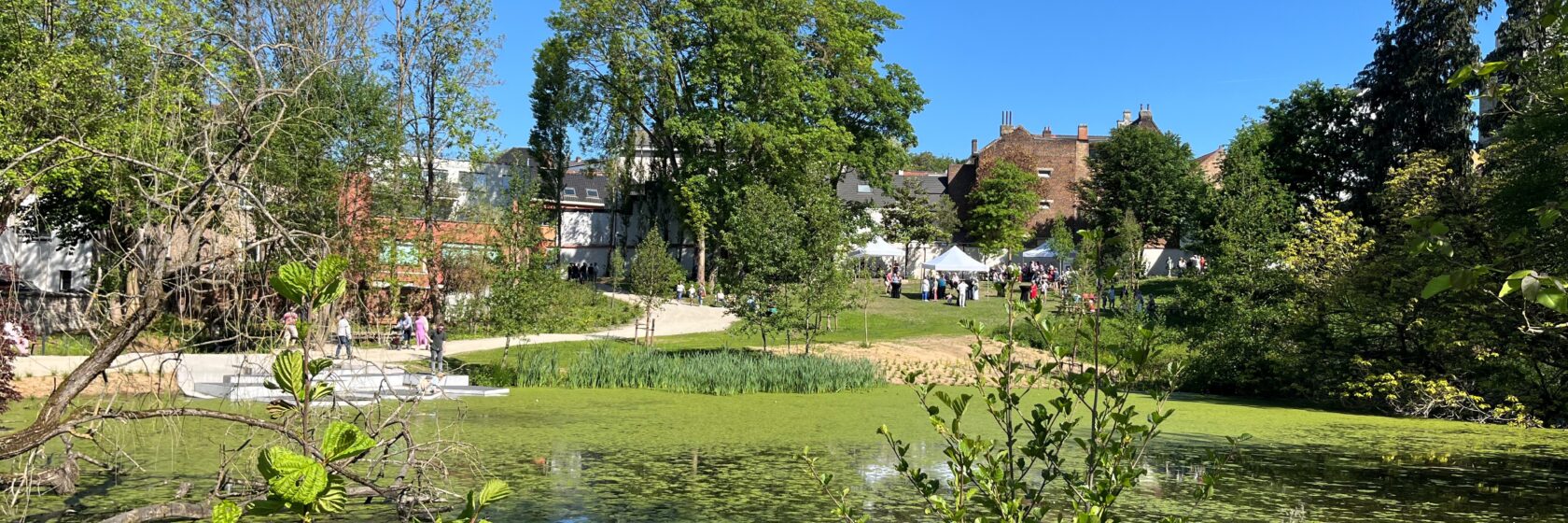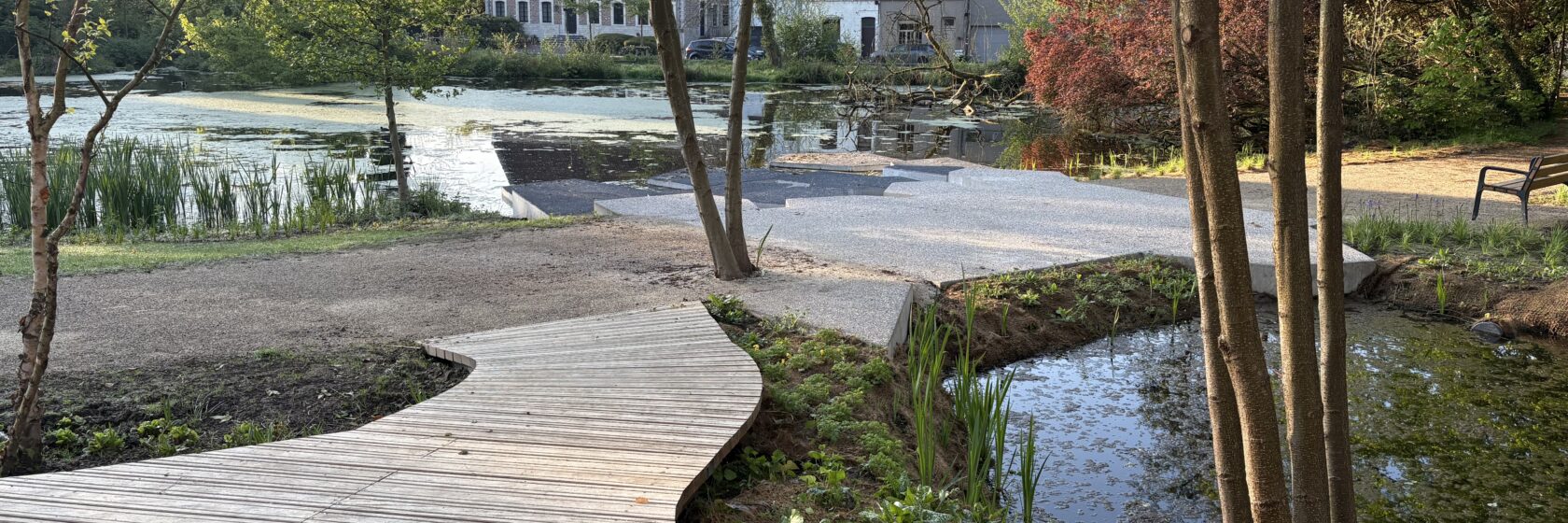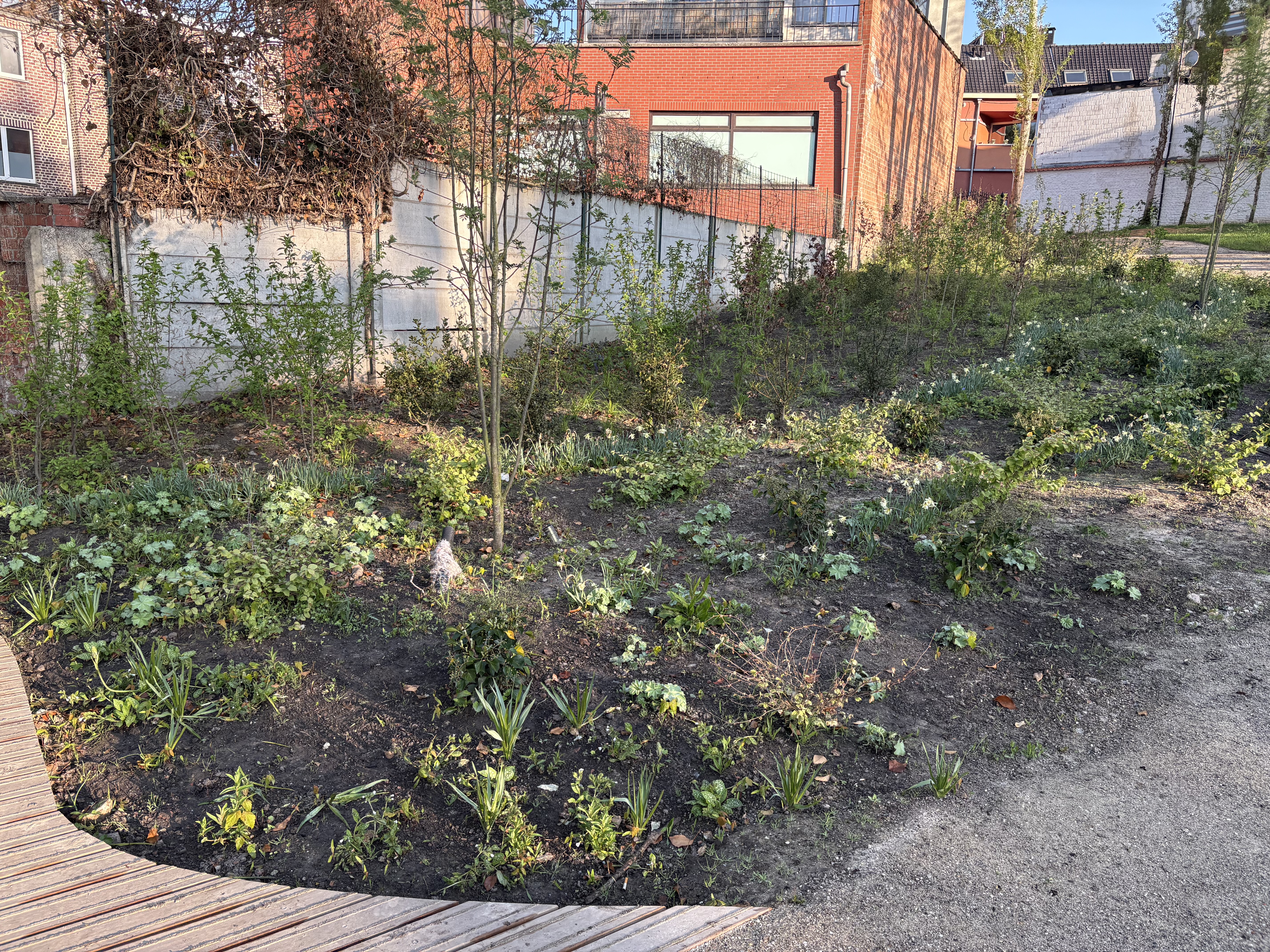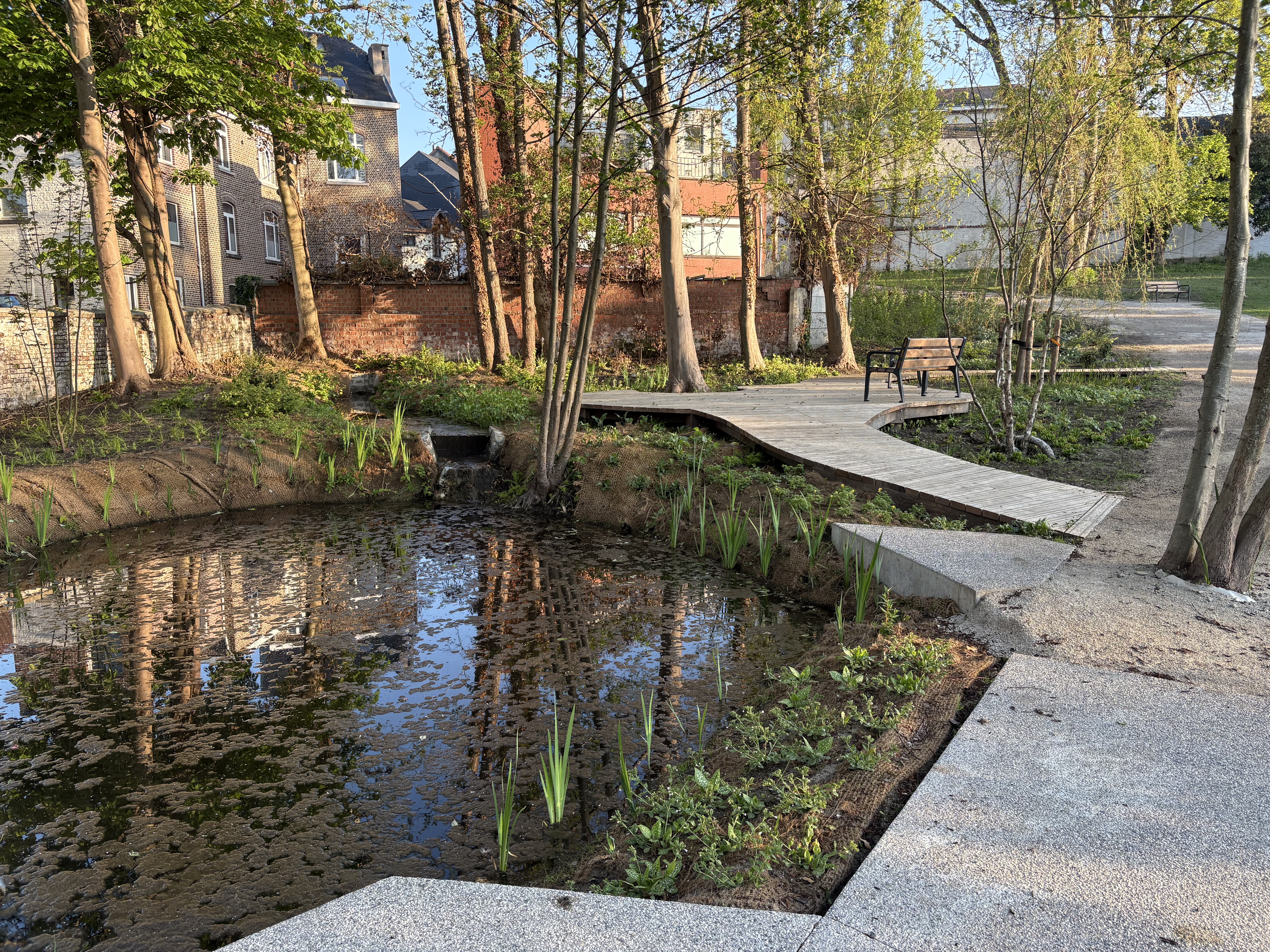
Liveable cities
From technical works to green revolution: how Overijse reinvented its public space
What began as a simple sewer project evolved into a comprehensive redesign of the neighborhood. The streets J.B. Dekeyserstraat, J.P. Dieudonnéstraat, and E. Carelstraat received new infrastructure, and the underground IJse stream was partially uncovered. This created a green, safe corridor for cyclists and walkers between Terhulpsesteenweg and Stationsstraat. Additionally, Groothuys Park underwent a transformation.
- Client
- Gemeente Overijse
- Location
- Overijse
- Expertise
- Hydraulic Infrastructure, IWM, Mobility, Landscape & Public Space, Climate Adaptation, Civil Engineering
Overijse is located on the southeastern edge of the Zoniënwoud, in the fertile IJsevallei. Historically, the town has been an important hub connecting cities like Brussels, Tervuren, Leuven, and Waver. This project aims to enhance the historical village center, fostering links between nature, recreation, and mobility.

From sewer project to visionary redevelopment
The original plan focused on separating waste and rainwater using a dual rainwater sewer system and a separate waste water sewer. This technical aspect sparked a wider transformation of the living environment. The IJse, previously hidden beneath the road, was uncovered and its capacity increased, improving both water quality and neighborhood safety. The new IJse channel was created with openings to the ground to naturally manage groundwater fluctuations.
During construction, camera inspections revealed the poor condition of the covered IJse culvert. Therefore, our civil engineering team carried out a complete renovation.
Thanks to the multidisciplinary collaboration of different teams, innovative solutions emerged: a safe bike path, a redesigned neighborhood square, and resilient water management.
Smart building, sustainable greening
The redesign emphasized permeable materials for streets and parking areas. For example, the square at J.P. Dieudonnéstraat was paved with permeable materials and featured spacious planting areas for new trees.
Greening was a major focus of this project. The paving was seeded with a clover mix that thrives in both dry and shady conditions.
The most beautiful part of the new park is the zone at the source. What used to be an overgrown, forgotten corner is now an idyllic spot with carefully chosen bankside plants and colorful flowers. Surrounded by a wooden deck, this peaceful location offers a beautiful contrast to the large, open park.
Marie Valckenaers, Junior engineer
Groothuys park: blending nature and heritage
A key aspect of the project was the redevelopment of Groothuys Park, a recognized heritage landscape. With a thoughtful management plan, we reopened the park to the public, incorporated valuable nature, and intertwined the landscape with the uncovered IJse. The new bike path now winds along the water, via J.B. Dekeyserstraat, creating a green connection between the park and the rest of the village.
Stinze plants & biodiversity

Our experts developed a detailed planting plan: they identified which species to keep, which to remove, and provided advice on new, suitable tree and plant additions. The priorities were:
- maximum blooming period
- climate-resilient trees
- diverse, robust tree species
- native hedge masses
- underplanting with spring effect
- stinze plants for park ambiance
- avoiding invasive species
During construction, valuable species such as cowslip, wood anemone, kingcup, wild garlic, and wood violet were carefully preserved and reintegrated. A wooden walkway crosses a marshy area of the park, planted with local flora.
Water & well-being
The central pond was cleaned up and planted with water plants, becoming an ecological and visual centerpiece of the park. Well-placed park furniture and resting spots provide visitors with serenity, connection, and views of nature.
The spring flows into the pond through a channel under the walkway, transitioning into a zone with stepping stones. These elements enhance the visitors’ experience of the water. A notable detail is the shape of the stones, which resemble a bunch of grapes, referencing Overijse’s grape-growing heritage.
From technical necessity to landscape enhancement: the Overijse project demonstrates how a sewer project can expand into a holistic vision of sustainability, livability, and history. The neighborhood is now greener, safer, and more resilient.
